Sourdough Honey Wheat Bagels
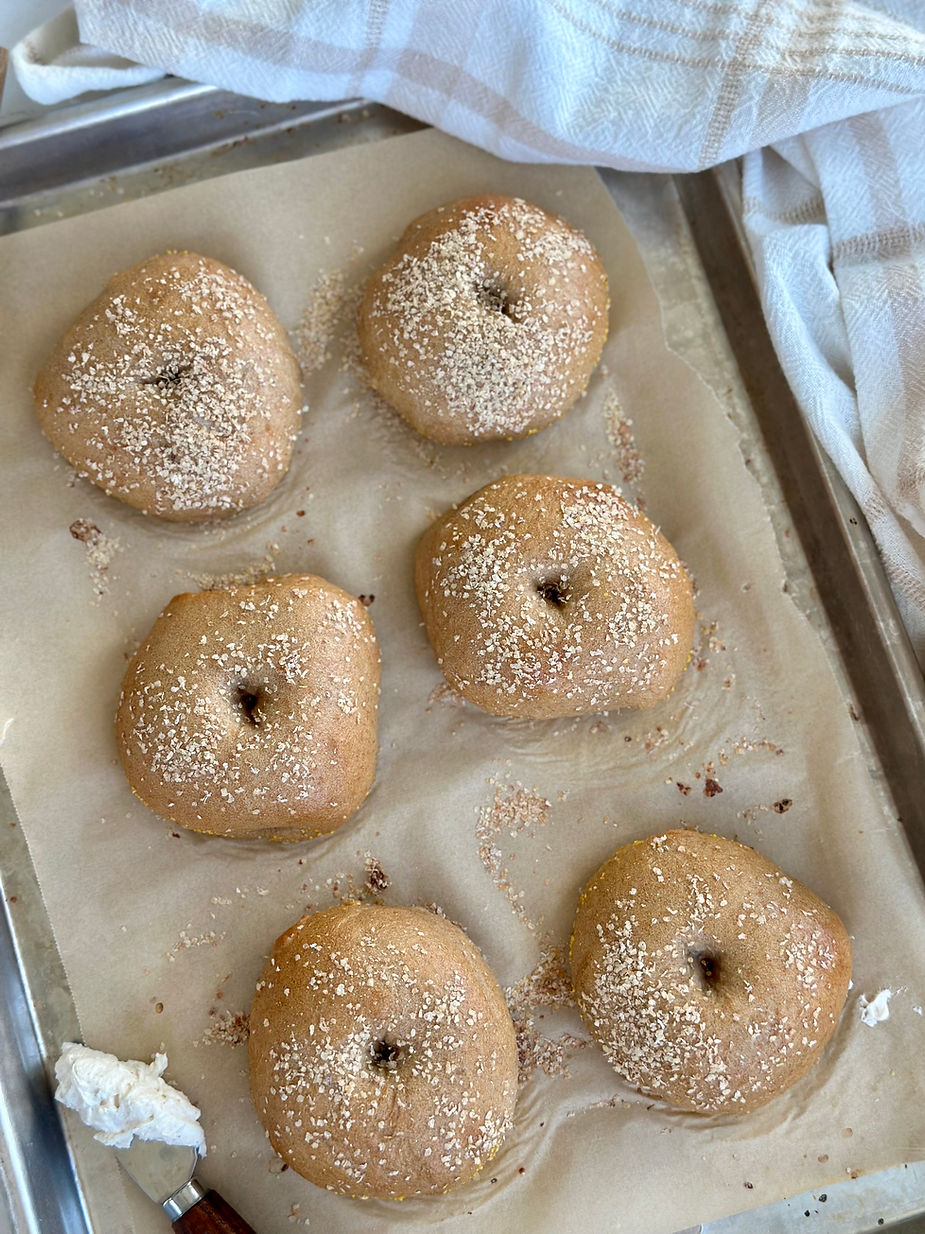
There’s something special about making homemade bagels. The process is a true labor of love, but the reward is a chewy, flavorful, golden bagel that’s far better than anything store-bought. These Sourdough Honey Wheat Bagels are a perfect balance of hearty earthy whole wheat, natural sweetness from honey, and a beautifully chewy texture.
Let’s dive into the process so you can make your own bakery-worthy sourdough bagels at home!
Why You’ll Love This Recipe:
Unlike commercial bagels made with yeast, these rely on an overnight sourdough fermentation, which not only enhances the flavor but also makes them easier to digest. The cold ferment develops deep, complex notes, while the honey in the dough and the boiling water bath gives them a gorgeous golden crust.
Tools You’ll Need:
- Kitchen scale- For accurate hydration and consistent results.
- Stand mixer or large mixing bowl- To mix the dough thoroughly (a dough hook helps with enriched or wet doughs).
- Measuring cups and spoons- for measuring smaller ingredients.
- Bench scraper- For cleanly dividing and shaping the dough.
- Parchment paper (4×4 squares)- To prevent sticking during proofing. To line pan for baking. These precut squares are so convenient linked here https://amzn.to/4mAbWHe
- Large pot- For boiling the bagels before baking.
- Slotted spoon or spider- To safely remove bagels from boiling water. I love this spider strainer linked here https://amzn.to/4kJqvGT
- Baking sheet- To bake the bagels evenly.
*As an amazon affiliate, this post may contain affiliate links, which means I may receive a commission for qualifying purchases. I will only recommend products that I personally love and use.*
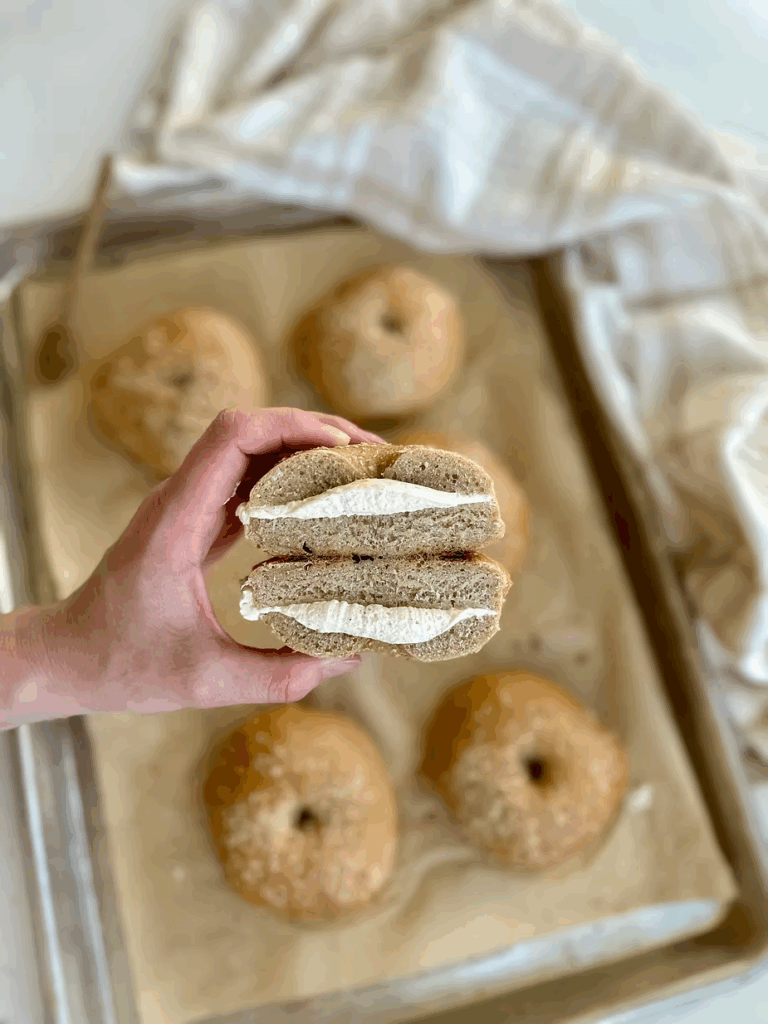
Gather Your Ingredients:
- Bread flour (or all-purpose)- High protein for strength and chew. I like to do a 50/50 blend to ensure structure and softness for my dough.
- Whole Wheat flour- adds flavor and nutrients to the bagels. If you don’t have this on hand you can substitute for bread or all-purpose flour.
- Water- Hydrates the bagel dough. Filtered or tap is fine!
- Sourdough starter- Natural leavening for flavor, structure, and health benefits. Make sure starter has been fed and is doubled in size.
- Honey- Sweetens the bagel dough and helps give bagel a golden brown finish.
- Fine sea salt- Balances flavor and strengthens gluten structure.
- Wheat Germ (optional)- for garnish on top of bagels. I like Bob’s Red Mill linked here.
Now let’s bake bagels!
Instructions
Step 1: Mixing Dough
In a large mixing bowl, combine the sourdough starter, bread flour, all-purpose flour, whole wheat flour, honey, salt and warm water. Stir until a shaggy dough forms.
Knead the dough for about 10 minutes, until it becomes smooth and elastic. If using a stand mixer, knead on low speed for 10 minutes. After kneading, transfer the dough to a lightly oiled bowl or container. Cover the dough and let it rest for 30 minutes.
Perform a stretch and fold by gently pulling up one side of the dough, stretching it, and folding it back onto itself. Rotate the bowl and repeat on all four sides.
Step 2: Bulk Fermentation
Cover the dough again and let it rise at room temperature, ideally around 75-78°F, for 8-10 hours. If your house is cold, place dough in oven with light on to create a warmer environment. This long fermentation helps develop flavor and digestibility. Because this dough has lower hydration and contains whole wheat, it won’t rise dramatically, this is normal! It’s better to proof this dough longer than not give it enough time, if you cut it short you may end up with a gummy and dense bagel.

Overnight Fermentation Option: After the first rise, transfer the dough to the refrigerator and let it cold ferment for at least 1 hour to firm up, or up to 12 hours overnight for optimal fermentation.
Step 3: Shaping the Bagels
When ready to shape bagels, remove the dough from the fridge. If you refrigerated dough over 6 hours, let it rest on the counter for 30 minutes to take the chill off before weighing and shaping.
Weigh the dough and divide it into equal portions, about 130g per bagel for a standard size.
Shape each portion into a tight ball by tucking the edges underneath. Let them rest on a greased or floured surface.

Prepare 14 squares of 4×4 parchment paper for shaping. I just folded my parchment into roughly this size and cut it. This dough is stickier so it’s important for you not to skip this step. Line your baking tray with your parchment squares and lightly spray with cooking oil to avoid sticking.
To form the classic bagel shape, poke a hole in the center of each dough ball using your thumb, then gently stretch the hole until it’s about 1.5 inches (4 cm) wide. The hole will shrink slightly as the dough rests.

Place each bagel on an individual parchment square to prevent sticking.
Cover with a clean kitchen towel and let them rest for 30 minutes while you prepare the water bath.
Step 4: Boiling and Baking
Preheat your oven to 375°F (190°C).
In a large pot, bring 2 quarts of water to a rolling boil. Stir in 1 tablespoon of honey, this enhances the bagels’ golden color and subtle sweetness.
Using the parchment squares, carefully lower a few bagels into the boiling water. Leave the parchment attached initially and remove it with tongs once the bagels are submerged.
Boil for 3 minutes, flipping halfway through. Because of the whole wheat content, these bagels may not float but continue boiling them for the full time.

Remove the bagels with a slotted spoon, letting the excess water drain off, then place them back on the parchment-lined baking sheet. Sprinkled with a garnish of wheat germ if desired.
Bake for 30 minutes, until golden brown and firm to the touch.
Let the bagels cool completely before slicing, this helps set the crumb for the best texture.
Enjoy your fresh homemade bagels!
Yields 7 bagels
How to Store:
Bagels are best enjoyed same-day, but can be kept at room temperature in an airtight container up to 3 days on the counter. Gently reheat by toasting to enjoy!
Freezer Storage- Freeze bagels (sliced or whole) for up to 2 months. Toast straight from frozen or let thaw at room temp then toast.
Do I have to boil them?
Yes, boiling sets the crust and gives bagels their signature chewy bite.
Can I shape them and refrigerate overnight?
Absolutely. Shape and refrigerate after shaping, then proof, boil and bake the next morning.
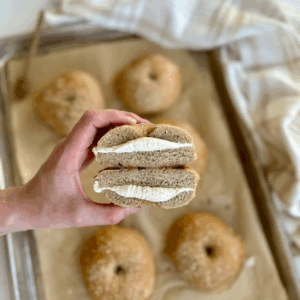
Sourdough Honey Wheat Bagels
Equipment
- Kitchen scale – For accurate hydration and consistent results.
- Stand mixer or large mixing bowl – To mix the dough thoroughly.
- Measuring cups and spoons – For measuring smaller ingredients.
- Bench scraper – For cleanly dividing and shaping the dough.
- Parchment paper (4×4 squares) – To prevent sticking during proofing and to line pan for baking.
- Large pot – For boiling the bagels before baking.
- Slotted spoon or spider – To safely remove bagels from boiling water.
- Baking Sheet – To bake the bagels.
Ingredients
Dough:
- 3 cups (400g) all-purpose or bread flour (or a 50/50 blend)
- ¾ cup (100g) whole wheat flour
- ½ cup (100g) active sourdough starter
- ⅓ cup (120g) raw honey
- 1 cup (225g) warm water
- 1 ¾ teaspoons (10g) sea salt
- Wheat germ (optional) for garnish
Boiling Water Bath:
- 2 quarts water
- 1 tablespoon honey
Instructions
Step 1: Mixing Dough
- In a large mixing bowl, combine the sourdough starter, bread flour, all-purpose flour, whole wheat flour, honey, salt and warm water. Stir until a shaggy dough forms.3 cups (400g) all-purpose or bread flour, ¾ cup (100g) whole wheat flour, ½ cup (100g) active sourdough starter, ⅓ cup (120g) raw honey, 1 cup (225g) warm water, 1 ¾ teaspoons (10g) sea salt
- Knead the dough for about 10 minutes, until it becomes smooth and elastic. If using a stand mixer, knead on low speed for 10 minutes. After kneading, transfer the dough to a lightly oiled bowl or container. Cover the dough and let it rest for 30 minutes.
- Perform a stretch and fold by gently pulling up one side of the dough, stretching it, and folding it back onto itself. Rotate the bowl and repeat on all four sides.
Step 2: Bulk Fermentation
- Cover the dough again and let it rise at room temperature, ideally around 75-78°F, for 8-10 hours. If your house is cold, place dough in oven with light on to create a warmer environment. This long fermentation helps develop flavor and digestibility. Because this dough has lower hydration and contains whole wheat, it won’t rise dramatically, this is normal! It’s better to proof this dough longer than not give it enough time, if you cut it short you may end up with a gummy and dense bagel.
- Overnight Fermentation Option: After the first rise, transfer the dough to the refrigerator and let it cold ferment for at least 1 hour to firm up, or up to 12 hours overnight for optimal fermentation.
Step 3: Shaping the Bagels
- When ready to shape bagels, remove the dough from the fridge. If you refrigerated dough over 6 hours, let it rest on the counter for 30 minutes to take the chill off before weighing and shaping.
- Weigh the dough and divide it into equal portions, about 130g per bagel for a standard size.
- Shape each portion into a tight ball by tucking the edges underneath. Let them rest on a greased or floured surface.
- Prepare 14 squares of 4×4 parchment paper for shaping. I just folded my parchment into roughly this size and cut it. This dough is stickier so it’s important for you not to skip this step. Line your baking tray with your parchment squares and lightly spray with cooking oil to avoid sticking.
- To form the classic bagel shape, poke a hole in the center of each dough ball using your thumb, then gently stretch the hole until it’s about 1.5 inches (4 cm) wide. The hole will shrink slightly as the dough rests.
- Place each bagel on an individual parchment square to prevent sticking.
- Cover with a clean kitchen towel and let them rest for 30 minutes while you prepare the water bath.
Step 4: Boiling and Baking
- Preheat your oven to 375°F (190°C).
- In a large pot, bring 2 quarts of water to a rolling boil. Stir in 1 tablespoon of honey, this enhances the bagels’ golden color and subtle sweetness.2 quarts water, 1 tablespoon honey
- Using the parchment squares, carefully lower a few bagels into the boiling water. Leave the parchment attached initially and remove it with tongs once the bagels are submerged.
- Boil for 3 minutes, flipping halfway through. Because of the whole wheat content, these bagels may not float but continue boiling them for the full time.
- Remove the bagels with a slotted spoon, letting the excess water drain off, then place them back on the parchment-lined baking sheet. Sprinkled with a garnish of wheat germ if desired.Wheat germ (optional)
- Bake for 30 minutes, until golden brown and firm to the touch.
- Let the bagels cool completely before slicing, this helps set the crumb for the best texture.
- Enjoy your fresh homemade bagels!
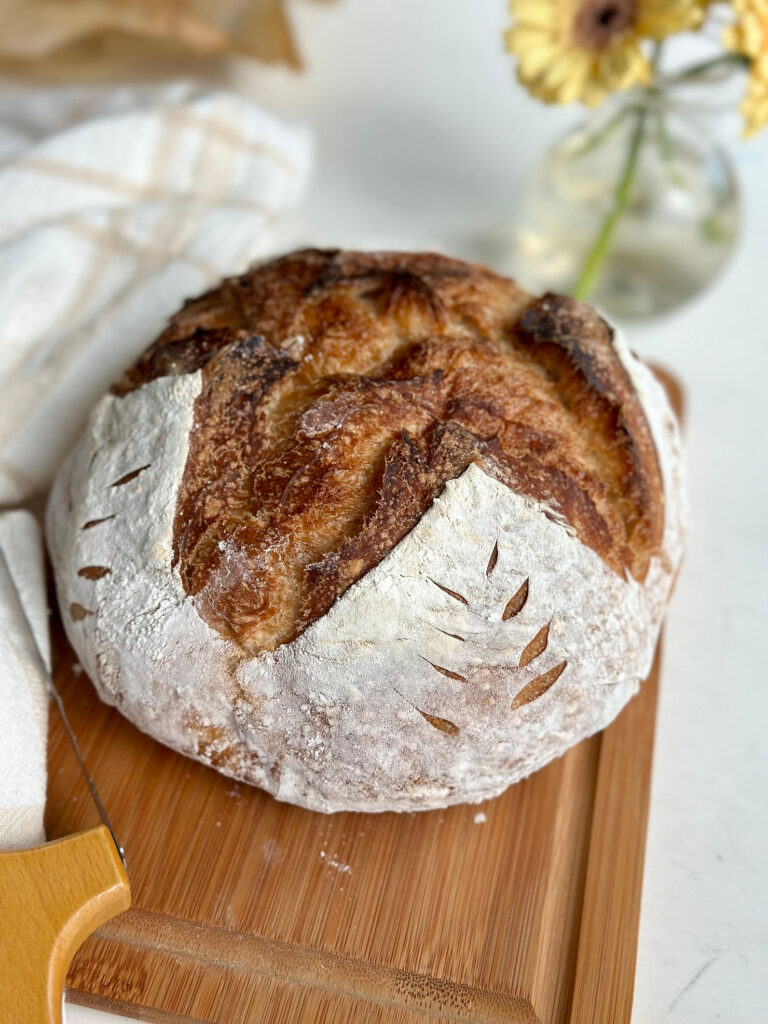
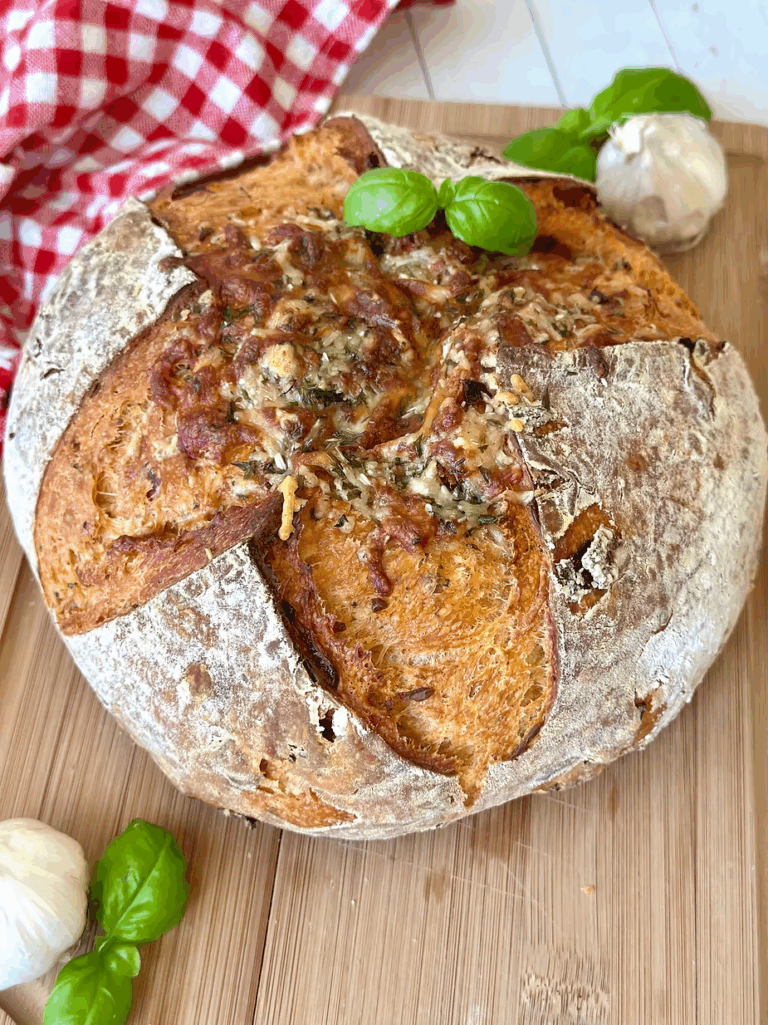
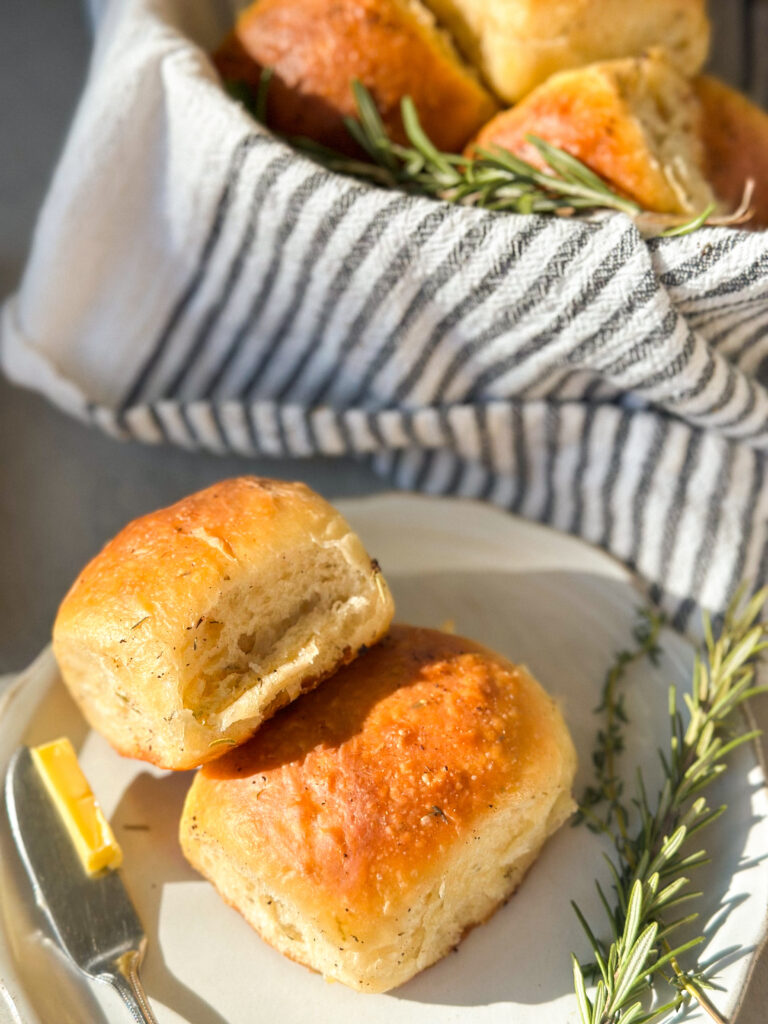
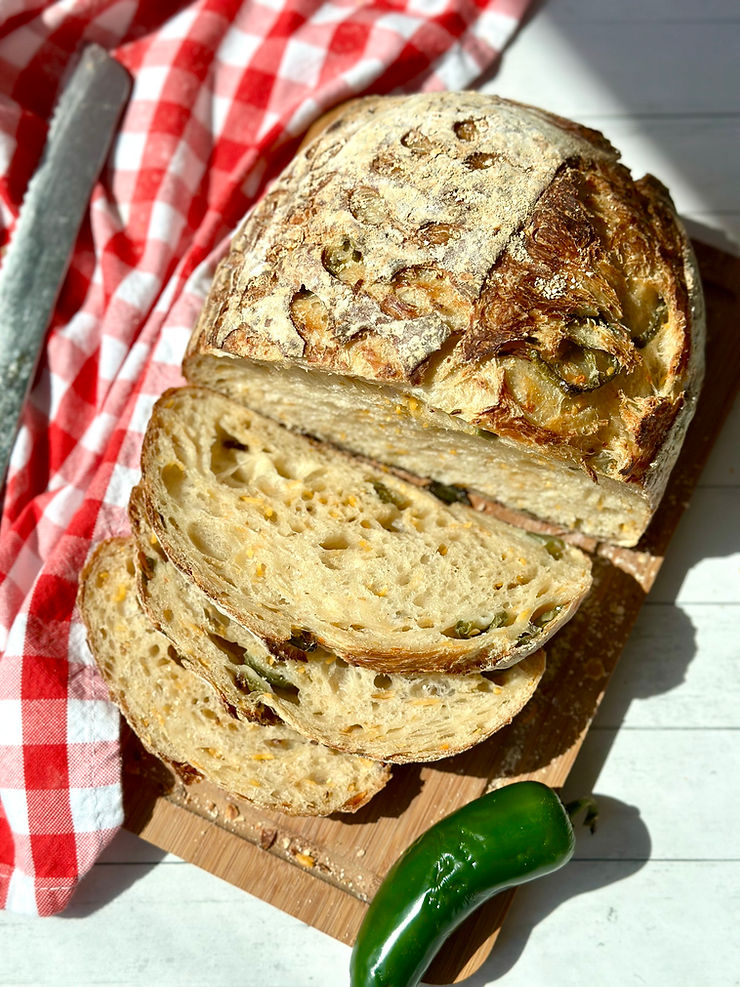
I have tried to make other bakers recipes for bagels and it never would turn out right until I tried this one!! I’m a little bit adventurous so I wanted to spice this up and do a jalapeño cheddar topping instead and it was perfection!!
Hi Pilah,
I’m so happy you loved this recipe and it was successful! I love the jalapeno cheddar topping idea. Sounds delish!
Hi, I have these started but I have a question. In Step 2, either choice room temp or overnight refrigerator option says after first rise. Is the first rise after step 1 #3?
My dough is beautiful, just need to clarify!!
Thank you
Hi Kari, you’ll need to do the room temp rise (don’t skip this) then you can optionally do the cold ferment or frig ferment step.